Swift is a powerful and intuitive programming language developed by Apple Inc. for building applications across its ecosystem, including iOS, macOS, watchOS, and tvOS. Here is an article about Best Books To Learn Swift and is written by our expert.
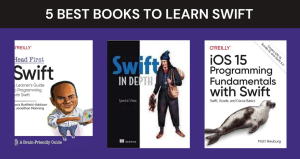
5 BEST BOOKS TO LEARN SWIFT
Launched in 2014, Swift was designed to offer a modern and safer alternative to Objective-C, Apple’s previous primary programming language.
With a focus on performance and developer experience, Swift aims to make writing and maintaining code more efficient while providing a range of features to enhance productivity and code safety.
Swift represents a significant advancement in programming for Apple platforms, combining modern language features with a strong focus on safety and performance.
Its clean syntax, powerful tooling, and open-source nature make it a compelling choice for developers looking to build robust and high-performance applications. Whether for creating iOS apps, macOS software.
Why To Learn Swift
Learning Swift offers numerous advantages, particularly for those interested in developing applications within Apple’s ecosystem. Here are several compelling reasons why learning Swift is beneficial:
Swift is the primary language for developing applications for Apple platforms, including iOS, macOS, watchOS, and tvOS.
With the continuous growth of Apple’s user base and the increasing popularity of iOS devices, mastering Swift opens up opportunities to develop apps for a substantial and lucrative market.
Swift is designed with modern programming practices in mind, providing a syntax that is both concise and expressive.
Its features, such as strong type inference, optionals, and error handling, enhance code safety and reduce the risk of common programming errors. This modern approach helps developers write more reliable and maintainable code.
Swift is built for performance, featuring a highly optimized compiler that translates Swift code into efficient machine code. Its speed and efficiency make it suitable for developing high-performance applications, from complex games to data-intensive apps.
Swift Playgrounds offer an interactive development environment where you can write Swift code and see immediate results. This feature is particularly useful for learning and experimenting with new concepts, allowing developers to test ideas quickly without the overhead of compiling a full application.
Swift’s open-source nature has fostered a vibrant community of developers who contribute to its ongoing development. This community support provides access to a wealth of resources, libraries, and frameworks, as well as opportunities for collaboration and learning.
Swift integrates seamlessly with Apple’s ecosystem, including frameworks and libraries such as SwiftUI for user interface design and Combine for reactive programming. Learning Swift equips developers with the skills needed to leverage these powerful tools and create sophisticated applications.
Swift is actively developed and supported by Apple, ensuring that it remains relevant as technology evolves. Learning Swift provides a future-proof skill set that aligns with the latest advancements in Apple’s software development landscape.
With the demand for skilled iOS and macOS developers continuing to rise, proficiency in Swift is highly sought after by employers. Learning Swift can enhance your career prospects and open up job opportunities in various sectors, including tech startups, large tech companies, and freelance development.
In sumary, learning Swift offers significant advantages for those interested in Apple platform development, providing a modern, safe, and high-performance language that is well-supported and in high demand.
Whether you are looking to develop apps, enhance your career, or explore new programming paradigms, Swift provides the tools and opportunities to achieve your goals.
Uses Of Swift
Swift is a versatile programming language primarily designed for developing applications within Apple’s ecosystem, but its utility extends beyond just iOS and macOS. Here are some key uses of Swift:
Swift is the primary language for developing applications on iOS, the operating system for iPhones and iPads. Its modern syntax and powerful features make it ideal for creating robust, efficient, and user-friendly mobile applications.
Swift is also used for building applications on macOS, Apple’s desktop operating system. It allows developers to create native applications with high performance and a seamless user experience, leveraging the latest features and frameworks provided by Apple.
Swift is used to develop applications for Apple’s watchOS and tvOS platforms. This includes creating apps for the Apple Watch and Apple TV, where Swift’s performance and ease of use are crucial for delivering a smooth user experience on these devices.
While primarily used for application development, Swift’s performance and safety features make it suitable for system programming tasks. It can be employed in lower-level system components or utilities, though its main use remains in application development.
Swift has gained traction in server-side development, thanks to its open-source nature and frameworks like Vapor and Perfect. These frameworks enable developers to use Swift for backend development, creating server-side applications and services with the same language used for client-side development.
Best Books To Learn Swift
Here are 5 best books to learn Swift according to our research mentioned below:
1) Head First Swift: A Learner’s Guide to Programming with Swift
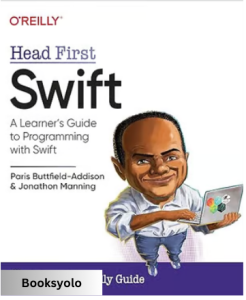
Head First Swift: A Learner’s Guide to Programming with Swift
Head First Swift: A Learner’s Guide to Programming with Swift by David Griffiths and Dawn Griffiths is a part of the popular Head First series, which is known for its engaging, visually-rich, and interactive approach to teaching complex topics. This book aims to introduce beginners to Swift programming through a hands-on, immersive learning experience.
In Head First Swift, the Griffiths authors present Swift programming in a way that is accessible and engaging for newcomers.
The book leverages the Head First series’ distinctive pedagogical style, which includes visual aids, puzzles, and real-world examples to make learning Swift both fun and effective. The goal is to help learners understand programming concepts and Swift syntax through active participation and practical exercises.
2) iOS Programming Fundamentals with Swift
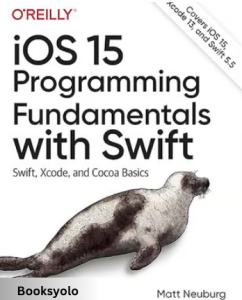
iOS Programming Fundamentals with Swift
iOS Programming Fundamentals with Swift by Craig Clayton is a comprehensive guide designed to teach the basics of iOS app development using Swift, Apple’s modern programming language. This book is targeted at beginners and those new to iOS development, offering a solid foundation in both Swift and the essentials of iOS programming.
In SOS Programming Fundamentals with Swift, Craig Clayton provides an in-depth introduction to iOS app development by focusing on the core concepts and techniques necessary to build functional and well-designed iOS applications.
The book covers fundamental topics in Swift and iOS development, guiding readers through the process of creating apps from scratch while explaining key principles and best practices.
3) Mastering Swift 5.3
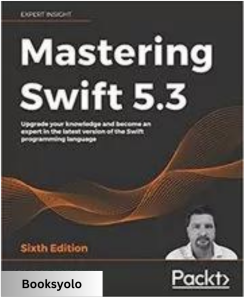
Mastering Swift 5.3
Mastering Swift 5.3 is a comprehensive guide designed to help developers harness the power of Swift, Apple’s modern programming language. This book delves into Swift’s features and capabilities, focusing on the enhancements introduced in version 5.3.
In the introduction, readers can expect to find an overview of Swift’s evolution and its significance in the development ecosystem.
The book likely emphasizes Swift’s emphasis on safety, performance, and expressiveness, making it a preferred choice for iOS, macOS, watchOS, and tvOS development.
Mastering Swift 5.3 aims to provide readers with the knowledge and skills needed to become proficient in Swift, equipping them to tackle complex programming challenges and develop high-quality software solutions.
4) Swift in Depth
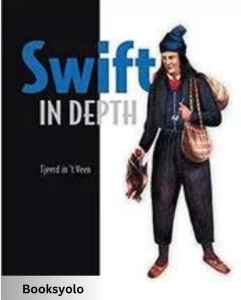
Swift in Depth
Swift in Depth is a book aimed at helping developers gain a deep and nuanced understanding of the Swift programming language. The introduction of this book typically sets the stage for an in-depth exploration of Swift’s features and design principles.
Overall, the introduction to Swift in Depth is designed to motivate readers to dive into the complexities of Swift and provide them with a roadmap for mastering the language’s more intricate and powerful features.
5) Swift in 24 Hours, Sams Teach Yourself
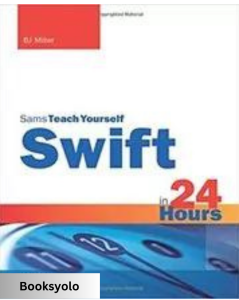
Swift in 24 Hours, Sams Teach Yourself
Swift in 24 Hours: Sams Teach Yourself is a practical guide designed to help developers learn Swift programming efficiently within a structured timeframe. The book is part of the well-regarded “Sams Teach Yourself” series, which aims to deliver concise, hands-on tutorials for various technologies.
Swift in 24 Hours aims to provide a structured, time-efficient learning experience for those who want to get a solid grasp of Swift programming quickly. The introduction sets the stage for a series of focused lessons that build the reader’s skills step-by-step.
Swift in 24 Hours: Sams Teach Yourself is designed to set clear expectations, provide a roadmap for learning Swift efficiently, and prepare readers for the structured approach that the book takes to teaching the language.
Conclusion
In the conclusion of Swift in 24 Hours: Sams Teach Yourself, readers are invited to reflect on their journey through the Swift programming language.
The book has equipped them with a solid foundation in Swift’s core concepts, from basic syntax and control flow to more advanced topics like functions, object-oriented programming, and optional handling. As they finish the structured lessons, they are encouraged to build upon this knowledge
The conclusion underscores the importance of continuous practice and practical application to deepen their understanding. It also points readers toward additional resources, such as official Swift documentation, online communities, and further reading materials, to support their ongoing learning and development.
By recognizing the effort invested and celebrating their progress, the conclusion aims to inspire confidence and motivate readers to pursue their programming goals and contribute to the dynamic world of Swift development.
Read More:

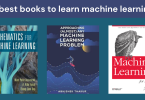
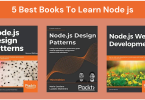
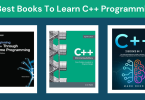
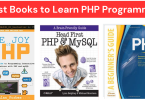
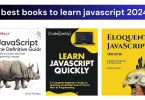
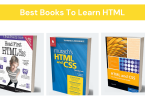
Leave a Comment